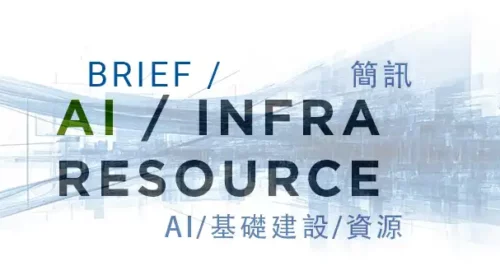Chongho Bridge finds riches in poor areas

Having found a formula for profits in rural finance, the former rural charity financier is seeking more money from a Hong Kong IPO
Key Takeaways:
- Chongho Bridge has filed to list in Hong Kong, reporting revenue of 3.18 billion yuan and a profit of nearly 210 million yuan last year
- The company’s average lending rate between 2021 and 2023 was more than 17%, drawing attention to its high interest loans
By Lee Shih Ta
Is providing microcredit services to rural China’s nearly 490 million residents good business? It looks that way if your name is Chongho Bridge Ltd., China’s largest microcredit lender, which is bringing its rags-to-riches story to Hong Kong where it has filed for an IPO.
But Chongho Bridge, which boasts of its prowess in “rural revitalization” and “serving rural areas,” is no pushover either, charging an average lending rate of over 17% to its rural clients, many of them farmers, over the last three years. That’s landed the company in some hot water periodically as some accuse it of predatory lending and being a loan shark.
Zhou Xiaochuan, former head of China’s central bank, once pointed out that rural finance is a critical organ of the larger “rural body.” In other words, China’s vast rural areas would have difficulty developing without support from specialty financiers who understood and can tailor to their specific needs.
But the profit-seeking nature of capital tends to drive such financial resources away from poor areas, where returns are often low, to more developed urban areas with greater efficiencies that offer better returns. As a result, rural finance has become an afterthought in China, dominated by charitable non-profit lenders and government-sponsored projects aimed at poverty alleviation. Indeed, Chongho Bridge has its roots in just such a background.
In 1996, the State Council, China’s cabinet, and World Bank created a pilot microcredit component for a poverty alleviation project in the Qinba Mountain Area of Sichuan province. That program was taken over in 2000 by China’s largest rural charity organization, the China Foundation for Rural Development. The foundation later launched Chongho Bridge in 2008, and made it into an independent legal entity providing comprehensive services to support farmers and agriculture across China.
Chongho Bridge’s rural credit business has grown to cover more than 550 counties in 23 provinces nationwide at the end of June, reaching nearly 200 million rural people. Along the way, it expanded its business from rural inclusive credit services to also include agricultural production, rural consumer goods and rural clean energy services, becoming an “integrated rural support service provider”.
According to its prospectus, Chongho Bridge had a total loan balance of 19.1 billion yuan ($2.71 billion) by the end of last year. That gave it a market share of about 8.6% among non-traditional financial institutions in China’s rural service market, making it the largest player in that niche, according to third-party data in the listing document.
Star shareholders
While it hardly sounds glamorous, Chongho Bridge’s ability to find riches in rural finance has attracted an A-list of global investors hankering for a bit of the bounty. According to its application document, Chongho Bridge’s largest shareholder is global private equity giant TPG Capital, which holds 28.67% of the company, followed by domestic financial giant Ant Group with 27.36%. Other big-name investors include the Ontario Teachers’ Pension Plan (OTPP) of Canada and Singaporean sovereign wealth fund Temasek, which hold 15.89% and 9.46% of the company, respectively. Leading investment bank CICC, which is the listing’s sole sponsor, also holds a 2.21% stake.
While such investors are mostly attracted to Chongho Bridge for its profitability, they also probably like the points they are winning with Beijing for supporting the country’s poverty alleviation program. Earning such government favor is crucial for doing business in China, much more so than in more mature Western markets.
Charity and poverty alleviation aren’t often associated with profits and IPOs. But Chongho Bridge is an exception. The company’s revenue has increased each year since it started taking on private investors, and it marked a milestone by earning its first profits last year.
According to the listing application, the company’s revenue grew from 2.22 billion yuan in 2021 to 3.18 billion yuan last year. While it lost 36.64 million yuan in 2021 and another 190 million yuan in 2022, it recorded its first-ever annual profit of nearly 210 million yuan in 2023.
The company continued to post strong growth in the first half of 2024, with its revenue up about 30% year-on-year to 1.92 billion yuan during the six-month period. But it suffered a setback in the profit column as its profit fell 72.4% to 77 million yuan from 280 million yuan over the same period. The company blamed the decline to losses related to changes in the fair value of its redeemable preferred shares.
A usurer?
While everything looks rosy on Chongho’s financial statements, we should point out that its major source of revenue comes from the high interest rates it charges its rural clients. Its actual lending rates have been relatively steady, varying between 17.5% and 17.9% over the last three years, including 17.8% in the first half of this year. Lending rates for its licensed credit subsidiaries were even higher, reaching as high as 19.8% in 2021 and 2022, and 24% in 2023 and in the first six months of this year.
For anyone unfamiliar with China’s Civil Code, 24% is the highest interest rate allowed for licensed lenders.
At the same time, Chongho Bridge is using the popular mantel of corporate responsibility to obtain low-interest funds earmarked for use in environment, society and governance (ESG) lending. But while it pays interest rates of just 3% and 6.4% for those funds, it still lends them out at high rates to its own rural borrowers.
So, why would anyone want to borrow from Chongho Bridge at such high interest rates? One reason is difficult access to loans in rural areas, while the other is Chongho Bridge’s “door-to-door services” that make the process easier for these less-sophisticated buyers.
The company currently has 7,200 employees and 127,000 “village-level partners,” which refers to locally respected and knowledgeable “celebrities” such as village primary school teachers, police chiefs, and shopkeepers. By using such “acquaintance lending,” Chongho Bridge can keep its success rates high and defaults low. At the end of June, the company’s loans more than 30 days and 90 days overdue stood at just 2.1% and 1.5% of its total, respectively, and its cumulative actual credit loss rate was as low as 0.5%.
Rural revitalization will be a central theme in China for years to come as part of the country’s modernization, meaning the need for rural finance will only grow. From its origins as a charitable organization leading the fight against rural poverty, Chongho Bridge has a history and business model that are difficult to replicate. But its non-profit roots also make it highly dependent on government policy support to operate profitably, including its dependence on high interest rates. In the end, the company looks like quite the unusual financial play for investors looking to tap the potential riches of China’s vast rural credit market.
To subscribe to Bamboo Works weekly free newsletter, click here




